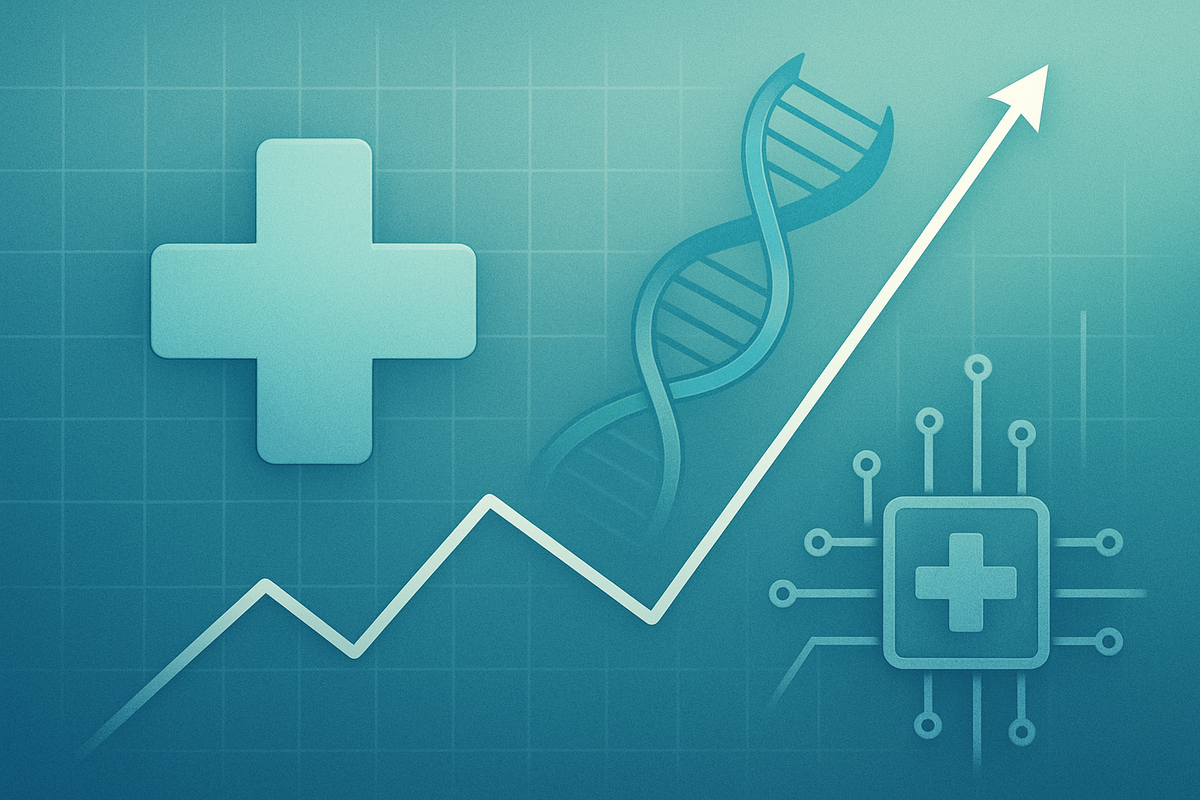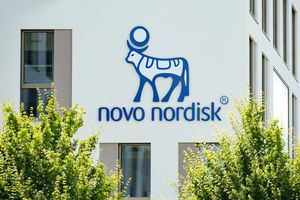
As the broader market concluded with a mixed performance on November 14, 2025, the S&P 500 Healthcare sector once again underscored its often-defensive nature, demonstrating resilience amidst an uncertain economic landscape. While specific real-time data for this future date is beyond current predictive capabilities, an analysis of the sector's inherent characteristics and prevailing drivers suggests it likely served as a stabilizing force for investor portfolios. The sector's performance today, in the context of broader market fluctuations, highlights the enduring demand for healthcare services and products, often insulated from immediate economic cycles.
The healthcare sector's ability to maintain equilibrium in a mixed market is rooted in its fundamental drivers. Unlike many cyclical industries, demand for healthcare is largely inelastic, driven by persistent demographic shifts, continuous innovation, and evolving regulatory frameworks. An aging global population and the rising prevalence of chronic conditions provide a long-term tailwind, ensuring a steady demand for pharmaceuticals, medical devices, and healthcare services. Furthermore, significant investments in research and development (R&D), particularly in biotechnology and advanced medical technologies like artificial intelligence (AI), continue to unlock new avenues for growth and efficiency. However, the sector is not without its challenges, including intense regulatory scrutiny, drug pricing pressures, and the ever-present concern of labor shortages and rising operational costs for providers.
Deep Dive into the Sector's Dynamics
The S&P 500 Healthcare sector is a vast and complex ecosystem, characterized by its inherent defensive qualities. Its non-discretionary nature means that individuals and governments consistently require medical care, regardless of the prevailing economic climate. This fundamental demand provides a crucial buffer against broader economic headwinds and market volatility, making it an attractive destination for capital during periods of uncertainty. Today's mixed market close likely saw investors seeking refuge in these stable assets, contributing to the sector's relative resilience.
Several key factors continue to shape the sector's trajectory. Demographic shifts, such as the increasing proportion of elderly individuals globally, are a primary driver, necessitating greater healthcare expenditure and specialized services. Technological innovation remains paramount, with advancements in drug discovery, medical diagnostics, and surgical techniques constantly pushing the boundaries of what's possible. Companies investing heavily in R&D and successfully bringing novel treatments to market often see significant returns. The regulatory environment also plays a pivotal role, with government policies on drug pricing, reimbursement rates, and healthcare access directly impacting profitability. Additionally, mergers and acquisitions (M&A) activity remains a constant feature, as companies look to consolidate, expand pipelines, and achieve economies of scale. However, challenges like labor shortages, particularly for nurses and specialized medical staff, and rising operational costs continue to pressure profit margins for healthcare providers.
Companies Poised for Gains and Losses
In a mixed market environment, the diverse sub-sectors within healthcare experience varying impacts. Companies with robust R&D pipelines and successful product launches are often poised for significant gains. For example, large pharmaceutical companies like Johnson & Johnson (NYSE: JNJ) or Pfizer (NYSE: PFE) with diversified portfolios and strong late-stage clinical candidates, especially in high-demand areas like oncology or rare diseases, tend to perform well. Similarly, biotechnology firms focused on groundbreaking gene therapies or personalized medicine, such as Gilead Sciences (NASDAQ: GILD) or Amgen (NASDAQ: AMGN), could see their valuations surge with positive clinical trial results or regulatory approvals.
Conversely, companies heavily reliant on elective procedures or facing significant patent expirations could experience headwinds. Healthcare providers, such as hospital chains like HCA Healthcare (NYSE: HCA), might face ongoing challenges from labor costs and reimbursement pressures, although technological investments in efficiency and improved staff retention strategies could mitigate some of these issues. Medical device companies like Medtronic (NYSE: MDT) or Abbott Laboratories (NYSE: ABT) that innovate rapidly and capture market share with new, less invasive technologies are likely to thrive, while those with aging product lines or intense competition might struggle. Health insurers, including UnitedHealth Group (NYSE: UNH) or Elevance Health (NYSE: ELV), are highly sensitive to regulatory changes and their ability to manage rising healthcare costs, with efficient claims processing and adaptability to evolving government programs being crucial for profitability.
Broader Significance and Industry Ripple Effects
The healthcare sector's performance in a mixed market holds wider significance, reflecting its role as a bedrock of both public health and economic stability. Its defensive characteristics mean that a resilient healthcare sector can help cushion the overall market during periods of uncertainty, preventing deeper downturns. The continuous innovation within healthcare also has ripple effects across other sectors. For instance, advancements in AI and data analytics in healthcare drive demand for technology companies providing specialized software and hardware. Similarly, the construction sector benefits from new hospital builds and clinic expansions.
Regulatory and policy implications are particularly profound. Discussions around drug pricing reform, changes in insurance mandates, and the future of government healthcare programs can create significant volatility. Any shift in these policies could drastically alter revenue streams and profitability for pharmaceutical companies, insurers, and providers alike. Historically, the healthcare sector has often served as a safe haven during economic downturns, a pattern that continues to hold true. Its non-cyclical nature, combined with constant innovation and demographic tailwinds, solidifies its position as a crucial, albeit complex, component of the global economy.
The Road Ahead: What Comes Next
Looking ahead, the healthcare sector is poised for continued evolution, driven by both immediate market dynamics and long-term demographic shifts. In the short term, its defensive appeal is likely to persist as global economic uncertainties linger. We may see continued M&A activity as companies seek to bolster pipelines, gain market share, and achieve greater efficiencies. Strategic pivots towards digital health solutions, telemedicine, and personalized medicine are expected to accelerate, driven by both technological advancements and the need for more cost-effective, accessible care.
Long-term possibilities include the proliferation of highly targeted therapies, the integration of AI into every facet of healthcare delivery and drug discovery, and a greater emphasis on preventative care. Market opportunities will emerge for companies at the forefront of these innovations, particularly those developing solutions for chronic disease management, geriatric care, and mental health. Challenges will include managing rising costs, addressing workforce shortages through automation and improved training, and navigating increasingly complex ethical and regulatory landscapes surrounding new technologies. Potential scenarios range from a steady, innovation-driven growth trajectory to periods of heightened volatility caused by significant policy overhauls or unexpected scientific breakthroughs.
Comprehensive Wrap-Up and Investor Outlook
In summary, the S&P 500 Healthcare sector's performance on a day marked by a mixed market close reinforces its role as a cornerstone of stability for investors. Key takeaways include its inherent resilience due to inelastic demand, the powerful influence of demographic trends, and the relentless pace of innovation. While regulatory pressures and cost containment remain ongoing challenges, the sector's fundamental drivers position it for sustained relevance.
Moving forward, the healthcare market is expected to remain dynamic. Investors should continue to monitor key indicators such as R&D pipeline progress, regulatory announcements, M&A activity, and trends in healthcare spending. Companies with strong balance sheets, diversified product portfolios, and a commitment to innovation are likely to be well-positioned. The enduring demand for health and wellness, coupled with transformative technological advancements, suggests that the healthcare sector will continue to offer compelling opportunities for those willing to navigate its complexities.
This content is intended for informational purposes only and is not financial advice






